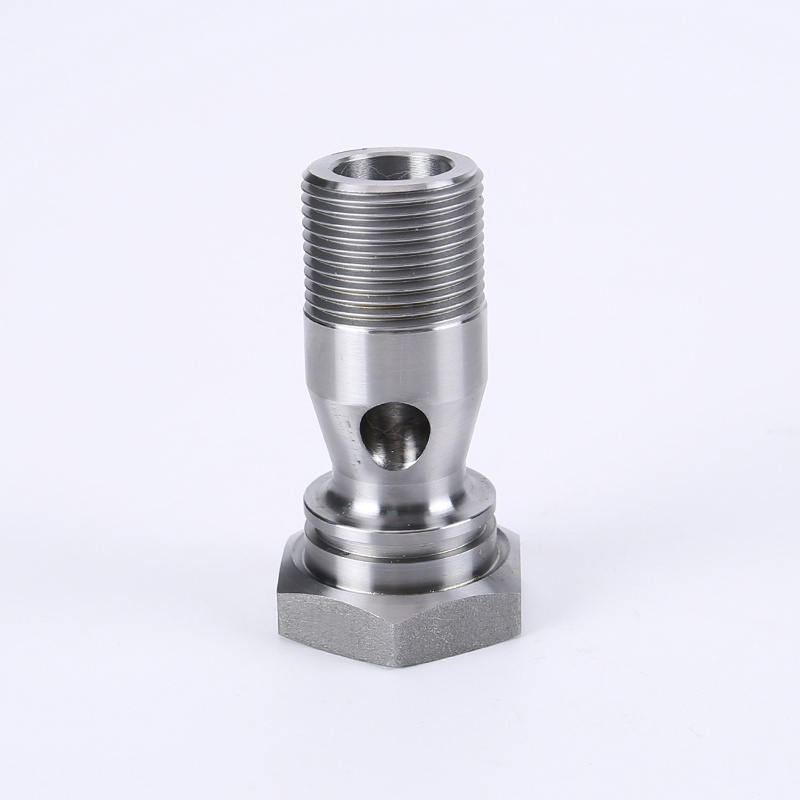Hydraulic Pipe Fittings: Essential Components for Efficient and Safe Hydraulic System Performance
2025-04-23
Hydraulic pipe fittings play a crucial role in the functionality and safety of hydraulic systems across a wide range of industries, including manufacturing, construction, automotive, and oil and gas. These fittings are integral components used to connect various hydraulic pipes, tubes, and hoses, ensuring that the system operates efficiently and safely under high-pressure conditions. The purpose of hydraulic pipe fittings is to allow for secure connections, prevent leaks, and ensure that fluids can flow seamlessly through the system without disruptions or inefficiencies.
The design and material selection for hydraulic pipe fittings are vital for their performance. These fittings are typically made from durable materials such as steel, stainless steel, brass, and sometimes even plastics like polypropylene, depending on the specific requirements of the hydraulic system. Steel is the most common material because of its strength and resistance to high pressures and extreme temperatures, which are often encountered in hydraulic applications. Stainless steel, with its resistance to corrosion, is often chosen for applications where the system might be exposed to harsh environments, including chemicals or moisture.
There are several different types of hydraulic pipe fittings, each designed for a specific function and application. The most common types include elbows, tees, adapters, couplings, and reducers, all of which come in a variety of sizes and configurations. Elbows, for example, are used to change the direction of fluid flow, while tees allow for branching the flow into multiple directions. Adapters are used to join different types or sizes of pipes, while reducers adjust the pipe diameter to accommodate various system requirements.
One of the key considerations when selecting hydraulic pipe fittings is ensuring that they can handle the high pressure typically associated with hydraulic systems. These fittings are engineered to withstand significant pressure without failure, as even a small leak or rupture can result in system failure, equipment damage, or safety hazards. It is essential to choose fittings that match the pressure ratings of the system and the types of fluids being used. Additionally, hydraulic pipe fittings must be resistant to corrosion, particularly in industries such as oil and gas or marine, where fittings are often exposed to harsh environmental conditions.
The installation of hydraulic pipe fittings requires precision and care. Proper installation is crucial to avoid leaks, which can lead to fluid loss, reduced system efficiency, or even equipment failure. The fittings must be securely tightened to the correct torque specifications to ensure a leak-free connection. Over-tightening can also be a concern, as it may damage the fitting or the connected pipes, compromising the overall system integrity. Regular inspection and maintenance of hydraulic fittings are essential to ensure they continue to function properly, with particular attention to signs of wear, corrosion, or damage.
Hydraulic systems are designed to operate smoothly when all components are functioning correctly, and hydraulic pipe fittings play a key role in maintaining the integrity of the entire system. They provide the necessary connections between various parts of the system, allowing for the transfer of fluids that power the machinery. Any failure in the fittings can disrupt fluid flow, leading to system downtime, inefficiency, or even catastrophic failures.
With advances in technology, hydraulic pipe fittings have become more advanced, offering features such as quick-connect designs, which allow for easier and faster assembly and disassembly. These quick-connect fittings are especially useful in situations where regular maintenance or replacement of components is required. Innovations in materials and design have also improved the overall performance and durability of hydraulic fittings, ensuring they can withstand more extreme conditions.
Hydraulic systems are often critical to the operation of machinery and equipment, so the role of hydraulic pipe fittings in ensuring reliable, safe, and efficient performance cannot be overstated. Properly selected, installed, and maintained hydraulic fittings can significantly contribute to the longevity of the system and help avoid costly repairs and downtime. As industries continue to rely on hydraulic technology, the demand for high-quality, durable hydraulic pipe fittings will only continue to grow. The right hydraulic fittings ensure that these systems operate as designed, delivering reliable performance in a variety of challenging environments.



